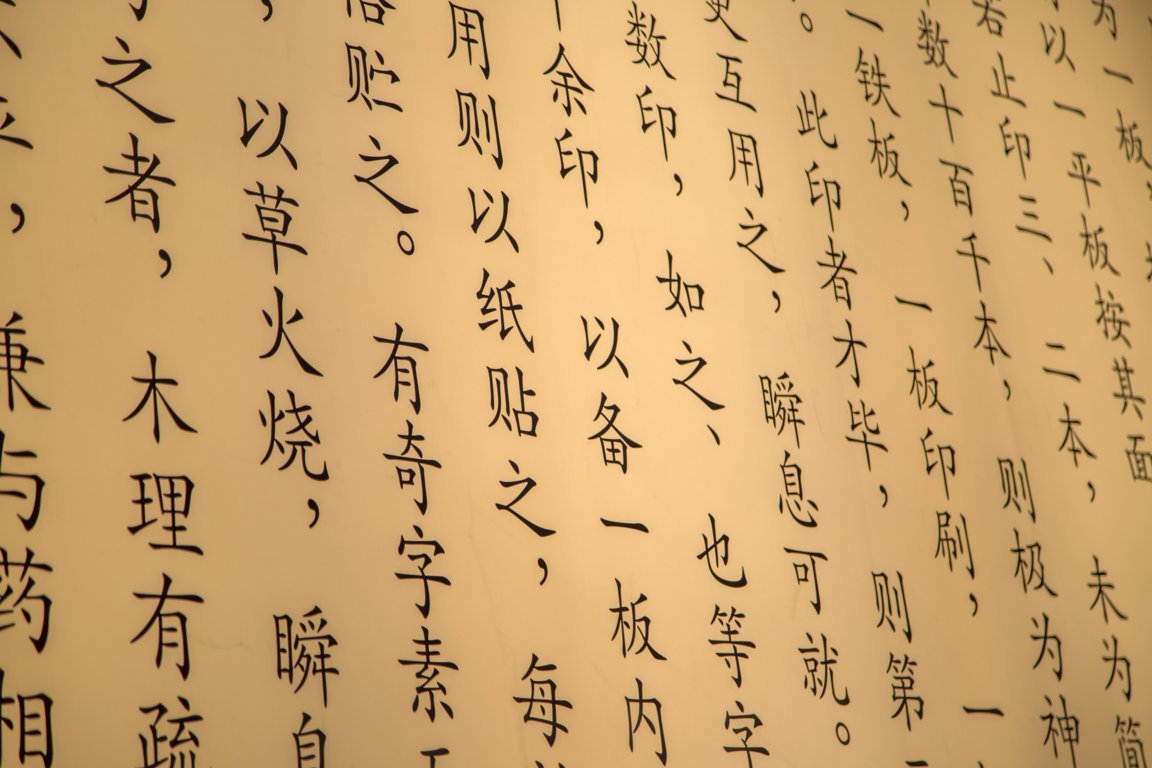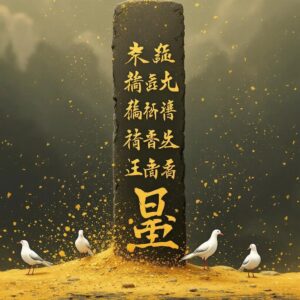Part 1: From Dragon Bones to Divine Decree
Have you ever wondered how writing began? Today, we send messages in an instant with our phones and computers. But imagine a time long, long ago, when there were no alphabets, no letters, no words written on a page. How did people first capture an idea and turn it into something that could be seen and saved forever? To find the answer, we must travel back thousands of years to ancient China, where the story of writing begins with a legend, a mystery, and a pile of bones that were mistaken for the remains of dragons.
The Legend of the Four-Eyed Scholar
Our story begins with a fascinating legend about a man named Cangjie (pronounced tsahng-jyeh), who lived approximately 5,000 years ago. Cangjie was the official historian for a great ruler known as the Yellow Emperor. But Cangjie wasn’t just any historian; the stories say he was born with four eyes. This wasn’t meant to be scary—it was a sign that he could see things others couldn’t, peering into the hidden patterns of the world.
In Cangjie’s time, people recorded information by tying complicated knots in ropes. This worked for simple things, like how many sheep someone owned, but it was impossible to use knots to capture a story, a feeling, or a complex idea. Cangjie knew there had to be a better way. So, he began to explore the world with his four observant eyes. He studied the unique patterns on the shells of tortoises, followed the delicate footprints birds left in the soft mud, and traced the shadows of mountains against the setting sun.
He realized that everything in nature had its special pattern, its signature. An idea struck him: what if he could create a simple drawing, a symbol, for everything in the world? He drew a crescent shape for the moon, a circle with a dot for the sun, and a stick-figure-like drawing of a person with arms and legs. These first symbols, or characters, were so powerful that legend says when they were created, the gods rained grain from the sky, and ghosts wailed in the night because humanity now held the secret to unlocking the wisdom of the universe.
A Mystery in the Medicine Shop
While the story of Cangjie is a wonderful legend, the true, proven story of Chinese writing is a detective story. Our mystery begins in the year 1899. For many years, farmers in a place called Anyang had been digging up large, flat, ancient bones and turtle shells. They called them “dragon bones” and believed they had magical healing powers. These bones were sold to medicine shops, where they were ground into powder and used to treat illnesses. Countless pieces of history were being crunched up and swallowed without anyone knowing what they truly were.
One day, a scholar from Beijing named Wang Yirong came down with an illness called malaria. His doctor prescribed a remedy that included “dragon bone” powder. But before the bones were ground up, Wang Yirong, being a man who studied ancient art, noticed something astonishing. The bones were covered in strange, neat carvings. They weren’t random scratches. They were a form of ancient writing.
He was electrified by his discovery. He immediately sent his assistant back to the medicine shop with instructions to buy every single “dragon bone” they had in stock. Thanks to his sharp eyes, Wang Yirong saved the earliest known evidence of Chinese writing from being lost forever.
Speaking to the Gods on a Turtle Shell
What Wang Yirong had found were not dragon bones, but the royal records of the Shang Dynasty, a kingdom that ruled parts of China over 3,000 years ago. The writing on them is now called Oracle Bone Script (甲骨文 – jiǎgǔwén).
These bones were used for a special purpose called divination, which is a way of asking questions to the gods or ancestors about the future. A Shang king might want to know: “Will we win the upcoming battle?” or “Will the queen have a healthy baby?” A priest, or diviner, would carefully carve the question onto a flat turtle shell or the shoulder blade of an ox. Then, they would heat a bronze rod in a fire and press it against the bone. The intense heat would cause the bone to crack with a sharp pop!
The diviner would then study the pattern of the cracks to find a “yes” or “no” answer from the spirit world. It was like a sacred conversation with the gods, and the bone was their telephone. Afterward, the result of what happened might also be carved onto the bone, giving us a complete record of their questions and the outcomes.
These ancient characters look very different from Chinese writing today, but if you look closely, you can sometimes see what they represent. They are pictures of the world around them, a beautiful and direct link to the minds of people who lived in the distant past.
In our next post, we’ll see what happened when this amazing new invention started to get messy, and how one of the most powerful rulers in history decided to take control and create a single script for all of China.
Stay Tuned…

